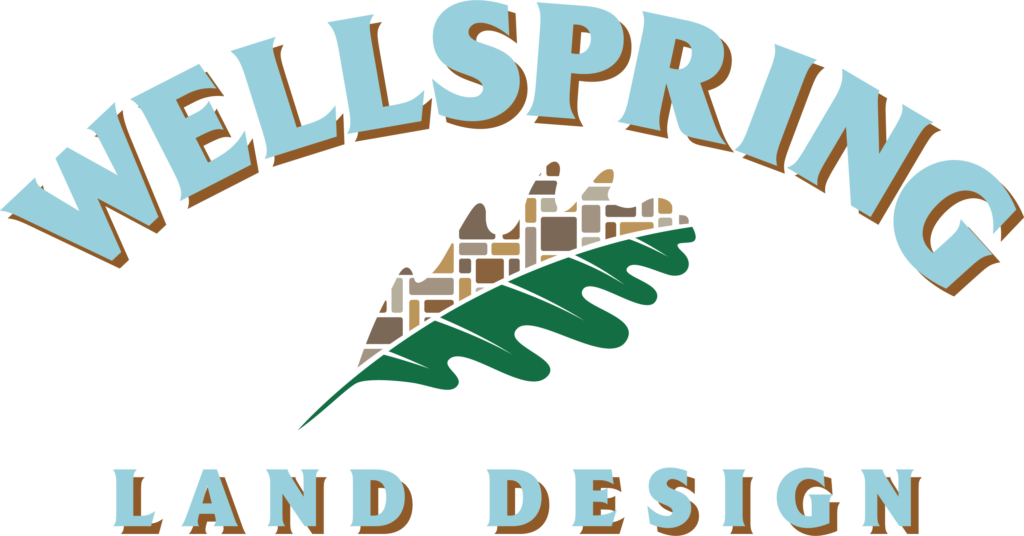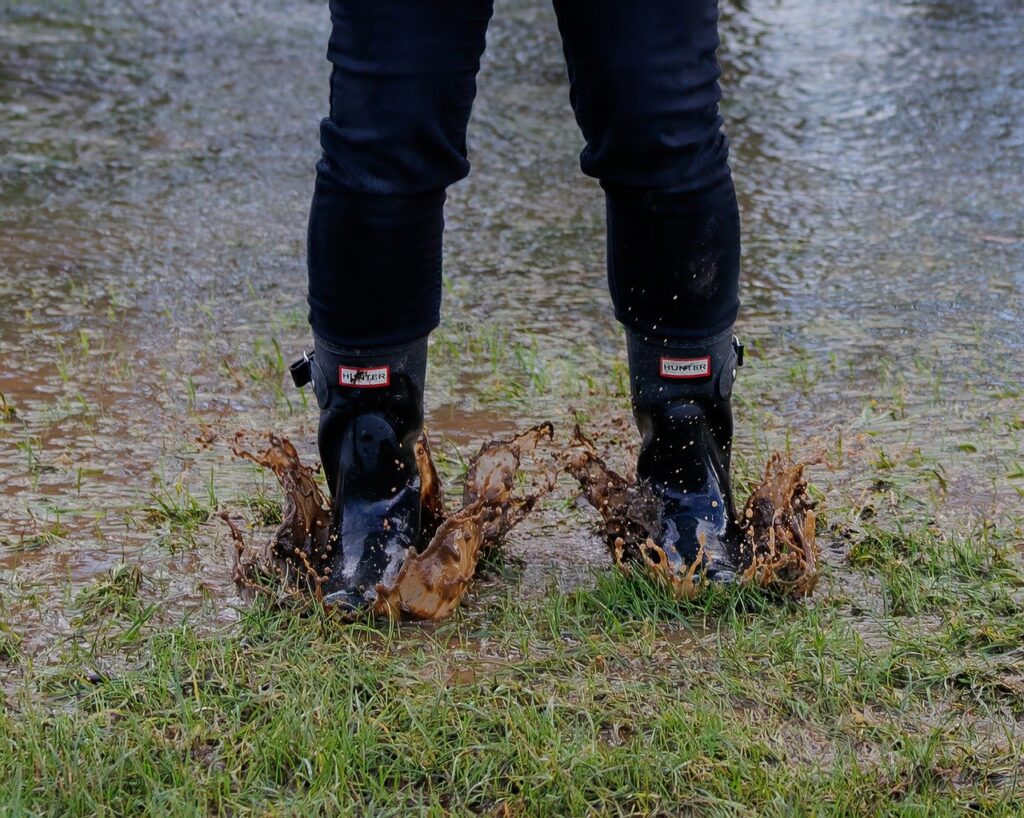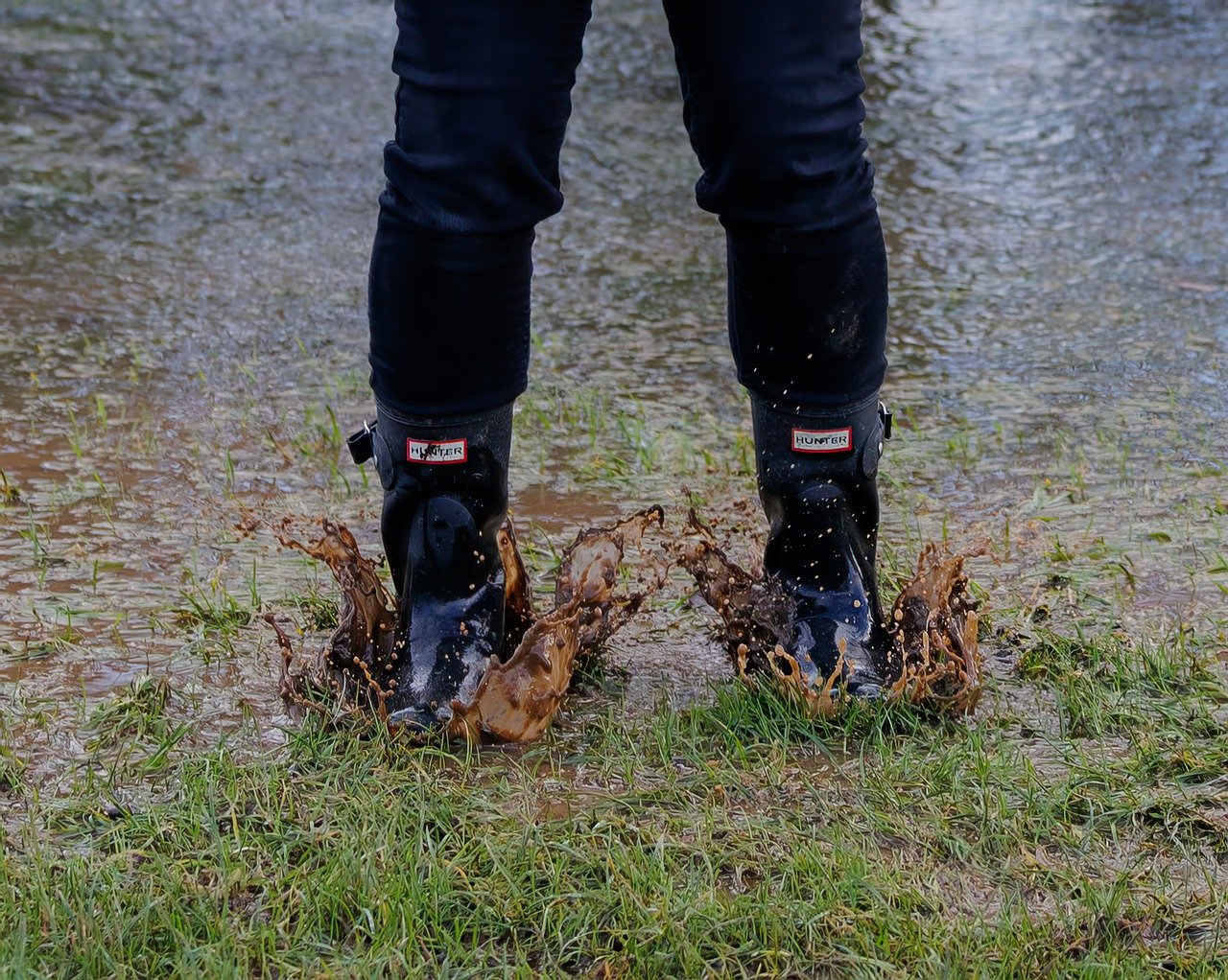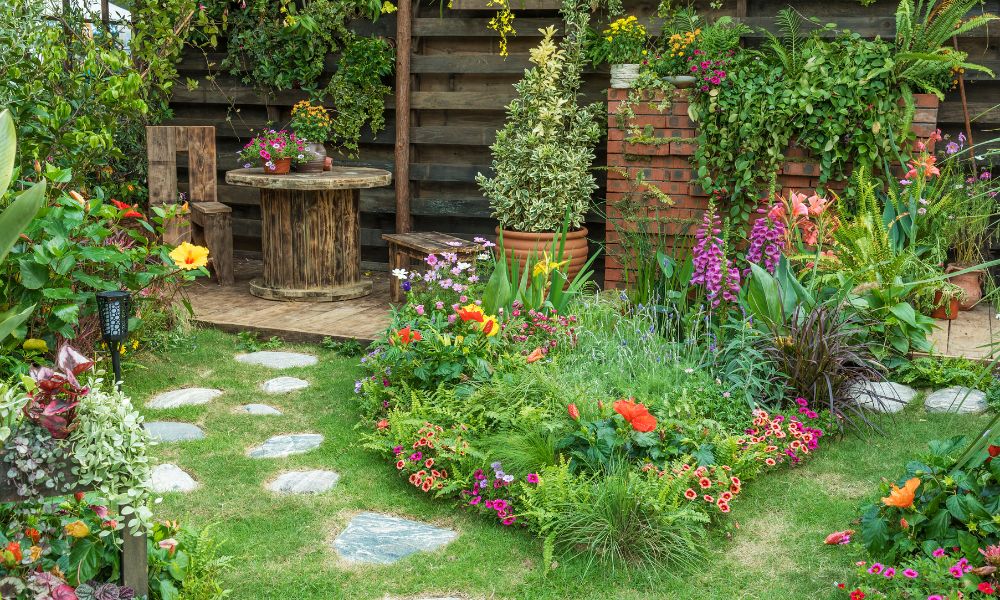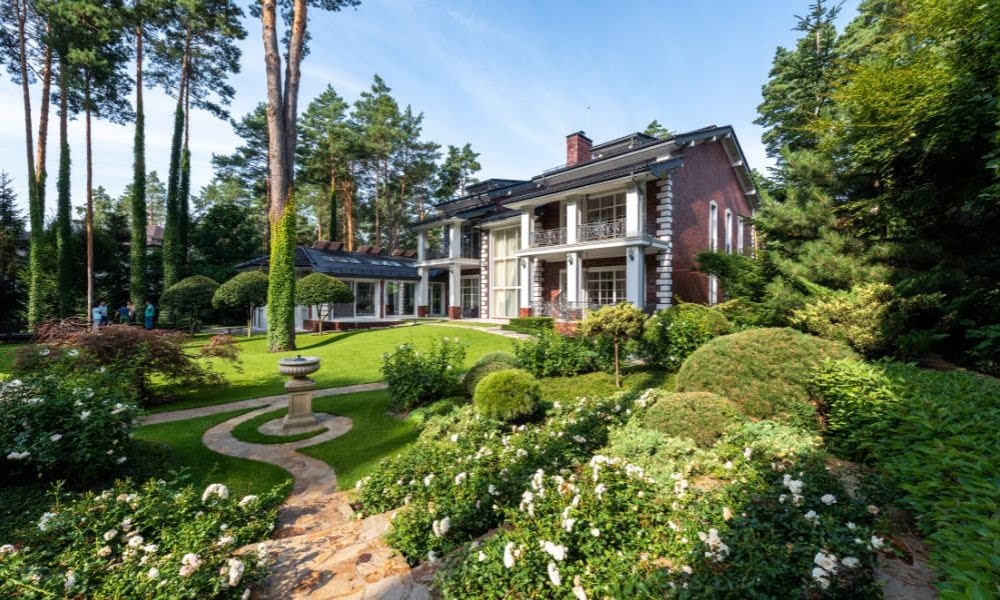A soggy yard, often called a “swampy” backyard, makes your outdoor space unusable, invites mosquitoes, and risks damage to plants and structures. For homeowners, addressing these challenges requires carefully evaluating the land’s condition and tailored solutions from experts like Wellspring Land Design.
Common Causes of a Swampy Yard
Compacted soil often prevents proper water absorption, while improper grading can lead to excess water accumulation in low areas. Excessive thatch buildup, common in certain lawns, hinders water infiltration, while high clay content in soil retains moisture, creating standing water. Additionally, obstructed or absent drainage systems exacerbate the issue by preventing water from flowing away effectively.
Diagnosing the Problem
To address these challenges, start by observing water pooling patterns after heavy rain—this reveals problem areas in your yard. Testing soil composition and permeability can pinpoint issues like compacted soil or excessive clay. Identifying any landscape features, such as uneven grading or obstructive structures, helps determine the root causes of water retention, allowing for effective and long-lasting solutions.
At Wellspring Land Design, we specialize in transforming swampy spaces into beautiful, functional backyards through innovative land design tailored to Zionsville’s unique landscape. Contact us today to start your transformation!
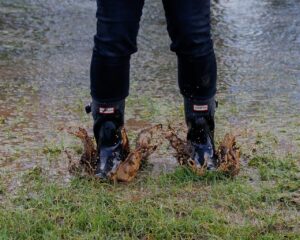
Effective Drainage Solutions for a Healthier Yard
A soggy lawn can dampen the joy of outdoor living. At Wellspring Land Design, we specialize in transforming waterlogged spaces into thriving landscapes. Combining expert methods and techniques, we help Indianapolis homeowners tackle and improve challenges head-on.
1. Soil Aeration for Improved Water Absorption
Compacted soil can prevent water from penetrating the ground, leaving you with persistent puddles. Using a garden fork or mechanical aerator to create small holes in the soil enhances water infiltration. This simple yet effective step allows water to move freely, reducing surface pooling and promoting healthier soil.
2. Topdressing with Organic Matter
Adding a layer of organic compost, a process called topdressing can work wonders for your soil. Compost improves the soil’s structure, loosens compaction, and improves drainage. Over time, this method not only helps water flow better but also enriches your lawn with nutrients for robust, vibrant growth.
3. Installing Advanced Drainage Systems
For more persistent soggy lawn issues, professional systems like French drains and dry wells are often the answer:
- French Drains: Involve trenches filled with gravel and perforated pipes that effectively redirect water away from low-lying or problem areas. To install a French Drain might be your permanent solution.
- Dry Wells: Subsurface structures collect water and disperse the excess, preventing it from pooling on the surface. Dry wells are particularly useful for managing heavy rainfall and protecting your yard from waterlogging.
Don’t let poor drainage limit the potential of your outdoor space. At Wellspring Land Design, we’re here to design solutions that work for your yard and lifestyle.
Contact us today to give a new life to your backyard!
4. Regarding the Landscape
A backyard prone to periodic flooding or pooling water can be frustrating and limit how you enjoy your outdoor space.
Sometimes, water problems stem from an uneven yard. Regrading involves adjusting the slope of your landscape to ensure water flows away from your home and other problem areas. This process not only creates an elevated mound to prevent standing water but also protects your foundation and plantings from moisture damage.
5. Establishing Rain Gardens
Rain gardens are a beautiful and eco-friendly solution for managing excess water. By planting water-tolerant species for your rain garden in low-lying areas, you create a natural sponge that absorbs runoff. Native plants thrive in these conditions while adding vibrant color and texture to your yard’s rain garden.
6. Utilizing Permeable Surfaces
Traditional paved areas, like patios and walkways, can contribute to drainage problems by preventing water from soaking into the ground. Replacing impermeable materials with permeable pavers allows excess water to pass through, reducing surface runoff and supporting a healthier environment.
At Wellspring Land Design, we combine these innovative strategies to create functional, stunning landscapes tailored to your needs. Let’s turn your waterlogged yard into a space you’ll love. Contact us today to get started!
7. Regular Lawn Maintenance
A healthy, well-drained yard doesn’t happen by chance—it takes regular care and thoughtful planning. At Wellspring Land Design, we specialize in helping Zionsville homeowners maintain functional, stunning outdoor spaces with effective drainage solutions and expert landscaping techniques.
Good lawn care practices go a long way in preventing a soggy lawn and water issues. Aerating your lawn annually helps alleviate soil compaction, making it easier for water to seep into the ground. Similarly, dethatching removes excessive organic buildup that can block water absorption, ensuring your lawn stays healthy and well-drained.
8. Soil Amendments for Better Drainage
Heavy clay soils, common in many areas, tend to hold onto moisture, causing water pooling and slow drainage. Incorporating sand or gypsum into the soil can improve its structure and permeability, allowing water to flow through more easily while supporting healthy plant growth.
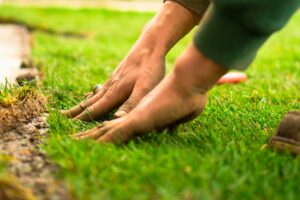
9. Gutter and Downspout Management
Your home’s gutters and downspouts play a crucial role in yard drainage. Ensuring that downspouts extend far enough to direct water away from your lawn prevents excessive runoff and pooling near your foundation, protecting both your home and your landscape.
By combining regular maintenance with targeted improvements, you can keep your yard dry, functional, and beautiful all year long. Ready to take your outdoor space to the next level? We provide expert guidance and solutions tailored to Indianapolis’ unique landscapes!
10. Water-Tolerant Plants
A well-designed landscape doesn’t just look beautiful—it works harmoniously with nature to manage water effectively.
Some plants are naturally adapted to thrive in moist conditions, making them ideal for areas prone to pooling water. Ornamental grasses like switchgrass and perennials such as black-eyed Susans and marsh marigolds can soak up excess moisture while adding color and texture to your yard. These hardy species are both practical and visually appealing, helping to create a landscape that’s as functional as it is beautiful.
11. Deep-Rooted Vegetation
For a more long-term solution, consider planting trees and shrubs with deep root systems, such as willows, red maples, or elderberries. These plants not only enhance soil structure but also absorb significant amounts of water, helping to prevent future drainage issues. Their roots create natural pathways for water to flow deeper into the soil, reducing surface pooling and improving the overall health of your landscape.
Why Maintenance Matters
While these solutions are highly effective, ongoing maintenance and observation are essential to ensure their success. Over time, soil conditions and water patterns can change, and regular upkeep—like pruning, monitoring soil health, and adjusting planting strategies—can address drainage issues and prevent them from recurring.
At Wellspring Land Design, we’re here to help you create a landscape that stands the test of time. With the right plants, expert planning, and consistent care, your yard can be a vibrant, functional space for years to come. Contact us today to start your transformation!
